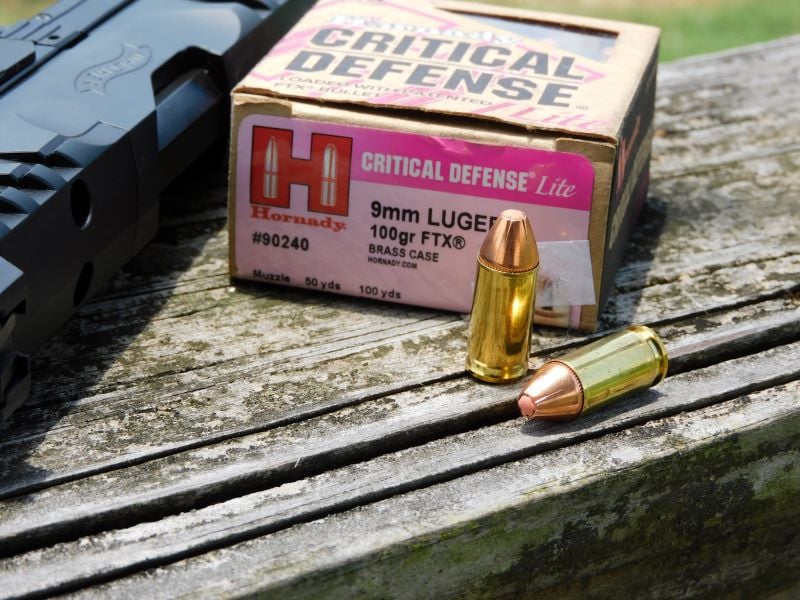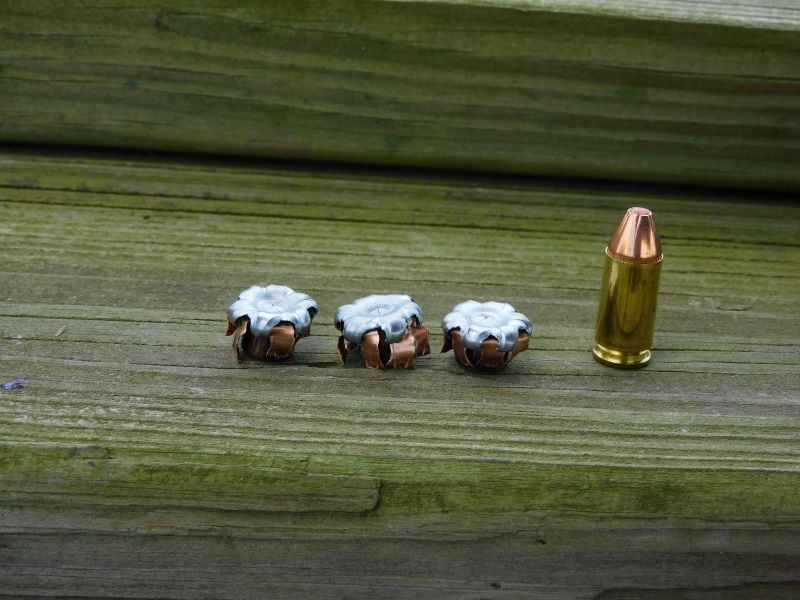The 9mm Luger may not be the best pistol round for every single task, but it is a good jack-of-all-trades that is tough to beat. The ammunition and firearms to shoot it are readily available and various to tailor to any need. The 9mm is a reliable centerfire cartridge with reasonable power, but not so much that it will leave a first-time shooter rattled. It is a great round to start with and move up from, and a great round to stick with, too. However, sometimes even 9mm Luger can feel too powerful in the hand.

Depending on the ammunition and the shooter, 9mm can be tough to handle, particularly in small, micro-compact pistols like the Sig P365 and S&W Shield. Guns like these are lightweight and often don’t give a hand-filling grip adequate enough to comfortably shoot. Even in a full-sized handgun, 9mm can have a learning curve. For those situations, ammunition makers have come out with a variety of lightly loaded 9mm ammunition designed to lessen felt recoil. Some of these are good, and some are bad. One load I have continually turned to over the years is the Hornady Critical Defense Lite 100-grain load. In this review, we will discuss why that is and see how it performs for accuracy, velocity, and ballistic performance.
The Hornady Critical Defense Lite
In theory, if you take a cartridge of a given size and make the projectile lighter in weight while keeping the powder charge the same, the user will feel less recoil. But that principle has to be balanced in a way not to affect the function of the pistol or the round on target. 9mm Luger ammo generally takes the form of a 115-147 grain bullet. Some manufacturers have taken to using all-copper or synthetic projectiles as low as 65 grains. These rounds will likely not hit in the same place as conventional ammo, their noses might not allow for proper feeding, and you can go too light when it comes to producing a round for personal defense. Less mass at the same velocity will mean less penetration. Enter the Hornady Critical Defense Lite round.
The Lite uses a projectile that is 100 grains in weight, not too far off from typical ammunition. It is a conventional copper-jacketed lead bullet. Like the other rounds in Hornady’s Critical Defense lineup, the hollow-point cavity is wedged with a polymer FTX plug. It keeps a round-nosed profile that helps with reliable feeding and the plug prevents clothing from entering the cavity, while also acting as a wedge to encourage expansion. The Hornady Critical Defense Lite 9mm is loaded in brass cases and comes in a 25-round pink box.
Accuracy Test
Light and heavy-for-caliber loads can be a tough sell as they may not function reliably in some handguns. Furthermore, they may not produce the best groups or hit the same point of aim as the sights. I have used the Hornady Critical Defense Lite in a number of 9mm handguns. I never had a reliability problem nor a perceived shift in point of impact. But on this particular outing, I decided to pit the Lite round against a bog-standard personal protection load, Winchester’s 115-grain White Box jacketed hollow point.

Velocity Test
The Hornady 9mm Lite is soft shooting, hits the point of aim, and cycles just like any standard load. But I was curious how fast those 100-grain pills are compared to the Winchester 115-grain load. I set up my Caldwell chronograph at 10 feet, benched my pistol, and took two five-shot strings — first with the Winchester and second with the Hornady load.
The Winchester 115-grain jacketed hollow-point load clocked in at an average velocity of 1,118 feet per second. The Hornady Lite came in marginally faster, at 1,134 feet per second. I expected a higher velocity, given that the Lite uses a 100-grain projectile. But it seems Hornady not only backed out on the projectile weight but also the powder charge as well.
I was able to confirm my results on accuracy and consistency with the chronograph results. The extreme spread, or the lowest velocity round to the highest velocity round, of the Winchester White Box load was 104 feet per second. The variation with the Lite round was only 14 feet per second. The Lite is more consistent.
Gel Test
Although I have used the Hornady Lite load for years to test pistol functionality, I never got the chance to test it for ballistic performance. The chronograph data suggests the 100-grain load is no slower, but no faster than standard 115-grain loads. But will that lighter bullet weight and less mass give us less penetration on target?
To find out, I set up a few Clear Ballistics 10% ordinance gel blocks fronted by four layers of denim. The gelatin represents tissue and the denim material is a stand-in for heavy clothing. This is a worst-case scenario for any round; but if a round can perform well in this test, we can take it as axiomatic that it will perform well in lesser circumstances. The Hornady Critical Defense line, in general, always delivers a good balance of penetration and expansion in this medium.

I stepped off to 10 yards and fired three rounds of the Hornady Lite into the gelatin. All three rounds traversed the denim barrier. All three rounds dumped much of their energy from the entrance to the six-inch mark, leaving behind puckered .75-inch stretch cavities behind. At that point, all three rounds lost most of their energy, having tumbled and expanded. All three rounds were captured, having gone 10 inches into the gelatin blocks. The recovered projectiles expanded beautifully and there was no separation between the lead core and the copper jacket. I measured two projectiles a .458 inch in diameter. The other expanded to .405 inch.

The Bottom Line
Hornady got a few things right when they developed their Critical Defense Lite 9mm load. They created a lesser recoiling load that was still within the parameters of bullet weight and bullet design that allow it to function and shoot well in most pistols. The Critical Defense Lite is a soft shooting load that is blind to heavy clothing and expands well. But that expansion came at the cost of penetration. If we take the FBI’s arbitrary guidelines of 12-18 inches of penetration in this medium, the Critical Defense Lite certainly does not qualify as duty ammunition.
Some have criticized this load as replicating the ballistics of the less powerful .380 ACP cartridge, but in a 9mm Luger case. I do not entirely buy that argument. Based on the results of this test, I would put the Lite somewhere in between 9mm Luger and .380. It equals the velocity but falls a few inches short of standard pressure 9mm ammunition, but most .380 loads fail to expand, and those that do tend to fall even shorter than the 9mm Lite. While the Hornady Critical Defense Lite is on the knife’s edge of adequacy, it is a valuable addition to the 9mm catalog for those who need less recoil and less perceived risk of collateral damage without stepping down to lesser calibers.

